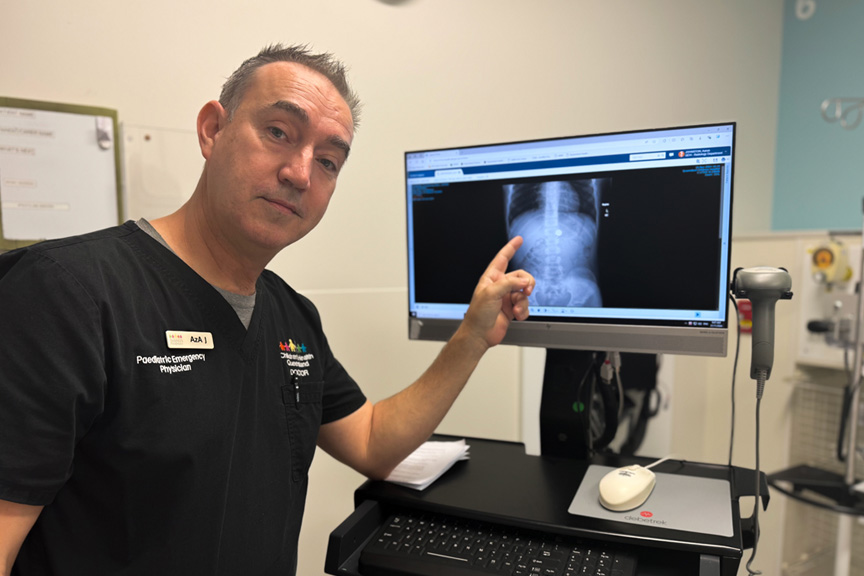
Beads, coins and button batteries were the most swallowed items by children behind a visit to the Queensland Children’s Hospital (QCH) over the past 10 years, emergency records show.
Since opening on November 29, 2014, the QCH emergency department has treated more than 10,200 children who presented after ingesting something they should not have.
Lego and food items that present a choking hazard rounded out the top five, with magnets, marbles and sharp objects, such as small pieces of glass, also commonly swallowed by little mouths.
Fishbones and medications not suitable for children were also among the more serious items ingested.
On average, QCH specialists care for about three children a day who have ingested foreign objects. In many cases these objects will move through the digestive track without causing harm, however some can cause serious complications and even death.
There were also more than 1,650 presentations for foreign items up children’s noses, with beads, Lego and balls the most common offenders.
Queensland Children’s Hospital paediatric emergency consultant, Dr Aaron Johnston, said it’s important parents and carers seek medical help as soon as possible if they suspect their child may have ingested a foreign object.
“Around 80 per cent of objects will pass through the body without causing harm, but there’s always a risk that some may become stuck or cause internal injuries,” Dr Johnston said.
“If a button battery becomes stuck in the oesophagus, for example, it can burn through the tissue in just two hours, causing a life-threatening injury.
“Magnets can also be very dangerous, especially if two or more have been ingested. They can pull together inside the body and cause sores, ulcers, blockages or form holes in the internal organs.”
With the holiday season approaching, Dr Johnston urged parents to remain vigilant, reviewing all presents gifted to their children, particularly goods from overseas.
“It’s important to make sure all gifts are age appropriate but also be cautious with items purchased from overseas websites as they may not have the same safety standards as we do in Australia,” he said.
If a child has swallowed an object without any obvious signs of choking or distress, there may not be any immediate symptoms.
However, parents should seek medical help immediately if they notice drooling or vomiting, wheezing, coughing or any difficulty breathing, chest or abdominal pain, refusal to eat, fever or blood in vomit or stool.
An X-ray may be needed to determine the cause of the symptoms, and in some cases surgical intervention may be required. Children under three years are at the highest risk of swallowing foreign objects.

If you suspect your child has swallowed something they shouldn’t have, contact your GP, call 13 HEALTH or go to your nearest hospital Emergency department. If there’s a chance it could be a button battery or magnet, call 000 immediately and ask for an ambulance.
In 2024 the QCH is celebrating its first 10 years of caring for sick and injured Queensland kids. Since opening its doors in 2014, the hospital has provided more than 3.4 million episodes of care to more than 455,000 children and young people.
Top 10 items swallowed by children requiring emergency care at the Queensland Children’s Hospital since 2014.
- Beads
- Coins
- Button batteries
- Lego
- Food
- Magnets
- Glass
- Batteries, other types
- Marbles
- Medications
Top 10 foreign bodies retrieved from children’s noses at the Queensland Children’s Hospital since 2014.
- Beads
- Lego
- Balls
- Seeds
- Nuts
- Toys
- Buttons
- Crayons
- Magnets
- Batteries
Source: Queensland Children’s Hospital